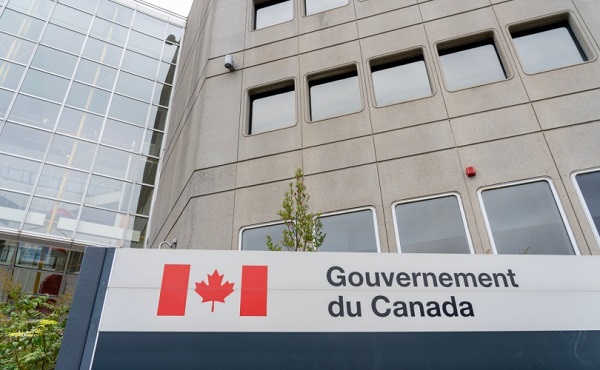COVID-19
The New York Times Admits Injuries from COVID-19 Shots

From Heartland Daily News
By AnneMarie Schieber
“This is a promising start, but what about the dead?”
The COVID-19 shots have caused multiple, serious injuries, an article in The New York Times acknowledged on May 4.
It is the first time the self-described newspaper of record has reported on the severe side effects from the vaccines, since the massive inoculation campaign that went into full swing starting in January 2021. The article profiled several health professionals with advanced degrees who suffered debilitating injuries ranging from neurological disorders, shingles, hearing loss, tinnitus, Guillain-Barre Syndrome, and racing hearts, weeks and months after their COVID-19 shots.
‘I’m Told I’m Not Real’
The patients, all familiar with the internal workings of the health care system, described their utter frustration with their complaints not being taken seriously.
“I can’t get the government to help me,” Shaun Barcavage, a 54-year-old nurse practitioner from New York City told the Times. Barcavage now suffers from tinnitus after suffering from stinging in his eyes, mouth, and genitals upon getting his first COVID shot. “I’m told I’m not real. I’m told I’m coincidence.”
Similarly, Gregory Poland, editor-in-chief of the journal Vaccine, found little interest in his condition, according to the Times. Poland has urged his contacts at the Centers for Disease Control to examine the connection between the shots and tinnitus, which has afflicted him.
“I just don’t get any sense of movement,” Poland told the Times. “If they have done studies, those studies should be published.”
Changing Times?
The 3,244-word article—which the Times says was the result of months of investigation—highlights reports of COVID shot injuries reported by patients, conservative media outlets, and courageous doctors almost immediately after the vaccine campaign got underway, but were dismissed by the Times and other mainstream media outlets.
“That it took The New York Times more than three years to report on COVID side effects is just the latest indictment against our corrupt corporate legacy media,” said Jim Lakely, vice president and communications director at The Heartland Institute, which publishes Health Care News. “Back when such reporting would have been just as true, and actually mattered, the likes of The New York Times characterized all talk of negative side effects of a rushed COVID treatment as ‘disinformation’ and unproven ‘conspiracy theories.’”
Traditionally, journalism’s role was to remain neutral and to be skeptical of power, but the pandemic proved that corporate media outlets can no longer be trusted to report the news, and the article is the Times’ attempt to rehabilitate its image, says Lakely.
“The same legacy media that led the charge to de-platform and shame any free-thinking American who dared to question government narratives and mandates during the pandemic does not get points, for now, starting to gently report what has been true since the spring of 2020,” Lakely said.
Never Mind Deaths
“This is a promising start, but what about the dead?” wrote Jeff Childers on May 4 in his Coffee and COVID Substack. Childers has meticulously documented the “sudden deaths” of young, healthy people who received the COVID shots.
“Never mind!” wrote Childers. “Here we find the first serious gap in the article’s coverage. The Times avoided this difficult issue, only briefly referring to possible deaths. But maybe it was too much to expect in this cautious, tentative first step toward officially acknowledging that ‘Houston, we may have a problem.’”
Sudden deaths began getting serious attention late in 2022 after insurance executives started noticing a rise in death claims of young, working-age people. Pilots, whose health is closely monitored, oddly began dying mid-flight.
Also missing from the article is any mention of Peter McCullough, M.D., who has become one of the most recognizable names around the globe warning people about the mRNA shots. “No, I was not contacted,” McCullough told Health Care News.
‘Politics At Play’
Childers says the timing of the Times article is suspicious, noting that former CNN anchor Chris Cuomo, who championed pandemic mitigation measures, went on national television recently to discuss his COVID shot injuries.
“I’m speculating, a lot, but cynically I sense politics at play,” wrote Childers. “We’re six months out from the election. Who does admitting even partial failure of the vaccine program help, politically, and who does it hurt? The acknowledgment of the reality of widespread, unaddressed vaccine injuries would seem to hurt President Trump the most.”
AnneMarie Schieber ([email protected]) is the managing editor of Health Care News.
COVID-19
Why FDA Was Right To Say No To COVID-19 Vaccines For Healthy Kids


From the Daily Caller News Foundation
The FDA’s decision not to authorize COVID-19 vaccines for healthy children has drawn criticism. Some argue: If parents want the shot, why not let them get it for their kids? That argument misunderstands what FDA authorization means — and why it exists.
The FDA often approves drugs that carry risks or have imperfect evidence of effectiveness. This is a tradeoff we sometimes accept for people who are ill: when someone is already sick, the alternative is untreated disease. Vaccines are different. They are given to millions of healthy children. This requires a higher standard, not just evidence for safety and immune response, but clear, durable clinical effectiveness. Approval for optional use isn’t neutral; once the FDA authorizes a vaccine, it carries the full weight of institutional endorsement.
Measles provides an example for how the FDA approaches vaccine approvals. Before the measles vaccine was introduced in 1963, the U.S. saw 3 to 4 million infections, ~48,000 hospitalizations, ~1,000 cases of encephalitis, and 400-500 deaths each year. Infants bore the brunt of the most severe outcomes.
Dear Readers:
As a nonprofit, we are dependent on the generosity of our readers.
Please consider making a small donation of any amount here.
Thank you!
That created a natural instinct: why not vaccinate the youngest and most vulnerable? The initial measles rollout was to 9-month-olds, but within two years that timing was changed to children who were at least 1 year of age. This was not because younger babies were not at risk or that the vaccine was riskier for them, but because it just didn’t work well enough to justify a universal campaign.
The knowledge of the particular risk younger infants face has led to continued research on the effectiveness of measles vaccination in that group. A 2023 trial of the combined measles/mumps/rubella (MMR) vaccine in infants aged 5-7 months, and subsequent safety and immune studies in 2024 and 2025, produced consistent results—safety and the ability to generate antibodies were demonstrated, but a durable response and protection against hospitalization were not.
That is why the FDA does not approve MMR for routine use in healthy children younger than 12 months of age. It is also precisely why getting back to herd immunity for measles is so essential: the youngest infants can only be protected if the rest of us are immunized.
What’s the evidence for COVID-19 vaccination in infants and children? It generates robust antibodies, often higher than in adults. But clinical benefits are modest, short-lived, and inconsistent. It is nowhere near the level of proof U.S. regulators require before making a vaccine universally available to healthy kids.
Some argue that even if benefits are modest, parents and pediatricians should be free to choose. But FDA authorization is not about personal preference; it is a stamp of approval for more than 70 million healthy children. Statistical safety is not enough. At that scale, even rare risks mean real harm to real children. COVID-19 vaccines were originally authorized in the hope that immune responses would translate into population-level benefits. For healthy children, the initial optimism sparked by early encouraging signals has steadily given way to three years of disappointing clinical results.
The lessons from measles are clear: safe but minimally effective isn’t enough. We don’t authorize MMR for 5-month-olds, even to parents who might want their children to get it. COVID-19 vaccines for healthy children should be judged similarly. This is not because there is a lack of any benefit, but because it doesn’t rise to the level we use for other vaccines. Only if and when proof of clinical effectiveness becomes available should authorization be reconsidered. At this time, the FDA is right to say no.
Monique Yohanan, MD, MPH, is a senior fellow at Independent Women, a physician executive and healthcare innovation leader, and Chief Medical Officer at Adia Health.
COVID-19
The Persecution of Canada’s “Other” Freedom Convoy Truckers

While thousands of serious criminal cases across Canada are dropped merely due to delays, many Convoy-related prosecutions on trivial charges continue more than three-and-a-half years later. The cases of Freedom Convoy truckers (left to right) Bern Bueckert, Clayton McAllister and Csaba Vizi (whose Volvo is shown at bottom) are still not fully resolved. (Sources of photos: (top left and right) screenshots from documentary Unacceptable?; (top middle) ThankYouTruckers.Substack; (bottom) Donna Laframboise)
On September 8, three and a half years after the 2022 Freedom Convoy departed Ottawa, and five long, stressful months after his trial actually ended, Robert Dinel walked out of court a free man.
Dinel, a Quebec heavy equipment operator who’d behaved entirely peacefully during the protest over Covid restrictions, had been charged with mischief and obstruction of police. Court proceedings were repeatedly delayed — four times alone just this year — until judge Matthew Webber of the Ontario Court of Justice finally stayed the charges on the grounds that Dinel’s Charter rights to a timely trial had been violated.
For Dinel, it was a relief. For Canadians concerned about freedom and justice, his legal ordeal was yet another example of a system gone off the rails.
Most Canadians are aware of the trials of convoy leaders Tamara Lich and Chris Barber, which ended in conviction; they are to be sentenced in October. Few may realize that many more protestors were charged, most for the relatively innocuous infraction of mischief, and have had their cases drag on and on through the courts for more than three years.
The record of Canada’s legal system clearly shows that mischief charges are routinely withdrawn before scarce and expensive court time is expended on relative trivialities. But when it comes to the truckers, the Crown attorneys at the Ottawa courthouse – employees of the Government of Ontario, not the federal government – appear to have lost all perspective. They are on a mission. The sheer intensity of the prosecution of Convoy members looks less like the fair administration of justice than revenge upon people who dared protest the arbitrary and oppressive measures of the Covid years.
The initial police crackdown itself was a mess. Those arrested were passed from police officer to police officer. Officials writing up the paperwork had no direct knowledge of what had actually transpired; extra charges appear to have been tacked on willy nilly. In Dinel’s case, the prosecution doesn’t even know the identity of the tactical officer who pointed a gun at his head and hauled him out of his vehicle on February 18, 2022.
In a police processing trailer four hours after his arrest, Dinel received a medical assessment from a paramedic. Seated and hand-cuffed throughout, the five-foot-three Dinel calmly and repeatedly told police he was in no fit state to be making decisions and that he wanted to speak to a lawyer. “I want to know what I’m signing,” he insisted. But the police officers, who outnumbered him ten-to-one, kept pushing him to sign an undertaking that he wouldn’t return to the protest area. The fact he never got his phone call – that he was denied his Charter right “to retain and instruct [legal] counsel without delay” – should have stopped this case in its tracks. The Crown chose to pursue it, anyway.
A week after Dinel’s mother died in July 2023, he suffered the first of four strokes. In December 2023, one occurred in the courtroom. “My whole face just seized up,” he recalls. “I had another stroke. My whole face drooped, then the judge freaked right out.” An ambulance was summoned and his trial was adjourned. “I hate court,” says Dinel. “It’s hard, you know. It’s stressful, it’s exhausting.” Rather than staying the charges on compassionate grounds, the prosecution continued, with Dinel accompanied by a service dog.
Nova Scotia trucker Guy Meister spent hours in the same paddy wagon as Dinel the day they were arrested. After travelling from his Nova Scotia home to Ottawa for court appearances more than a dozen times – at considerable expense – in May of this year Meister was found guilty of mischief, but not of obstructing police. In late July, he was sentenced to 20 hours of community service, six months’ probation, and ordered to pay a $100 victim surcharge.
The trial for Windsor, Ontario trucker Csaba Vizi began just this month, the same day Robert Dinel’s charges were stayed. Video broadcast around the world in February 2022 shows him being assaulted by multiple police officers after he’d exited his truck and knelt down in the snow with his hands behind his head. None of those officers were themselves charged following this violence. None were forced to raise tens of thousands in lawyers’ fees, as Vizi has. Even protesters who have endured the stress of a trial and been acquitted have still not always walked free and clear, because the Crown has often insisted on filing appeals. As a result, defence lawyers routinely advise Freedom Convoy protesters that their legal nightmare isn’t actually over until an additional 30 days have come and gone. In one instance, the Crown waited until the last afternoon of the last permissible day to file its appeal.
These are just a few examples of what’s been going on in Canada’s justice system, one already beset by long delays for cases involving far more serious crimes. Credible news reports suggest that the majority of criminal cases in Ontario aren’t even making it to trial, with sexual assault
charges dropped because of delays. Yet the Convoy prosecutions continue.
Many people insist Covid is over, that we should all move on. But the legal persecution of the truckers who bravely protested government overreach in the bitter winter of early 2022 is far from over.
Donna Laframboise is an independent journalist and photographer. A former vice-president of the Canadian Civil Liberties Association, she is the author of Thank You, Truckers! Canada’s Heroes & Those Who Helped Them.
The original, full-length version of this article was recently published in C2C Journal.
-

 Alberta2 days ago
Alberta2 days agoAlberta first to add citizenship to licenses
-

 Business2 days ago
Business2 days agoCarney government’s housing GST rebate doesn’t go far enough
-

 Business2 days ago
Business2 days agoCarney’s Ethics Test: Opposition MP’s To Challenge Prime Minister’s Financial Ties to China
-

 Alberta2 days ago
Alberta2 days agoBreak the Fences, Keep the Frontier
-

 Business2 days ago
Business2 days agoAttrition doesn’t go far enough, taxpayers need real cuts
-

 Media2 days ago
Media2 days agoCancel culture wins ultimate victory as murder of Charlie Kirk ghoulishly celebrated by radical Left, media included
-

 Alberta2 days ago
Alberta2 days agoAlberta Education negotiations update: Minister Horner
-

 Opinion2 days ago
Opinion2 days agoRFK Jr. Reveals Unforgettable Details About Charlie Kirk in Emotional Tribute






